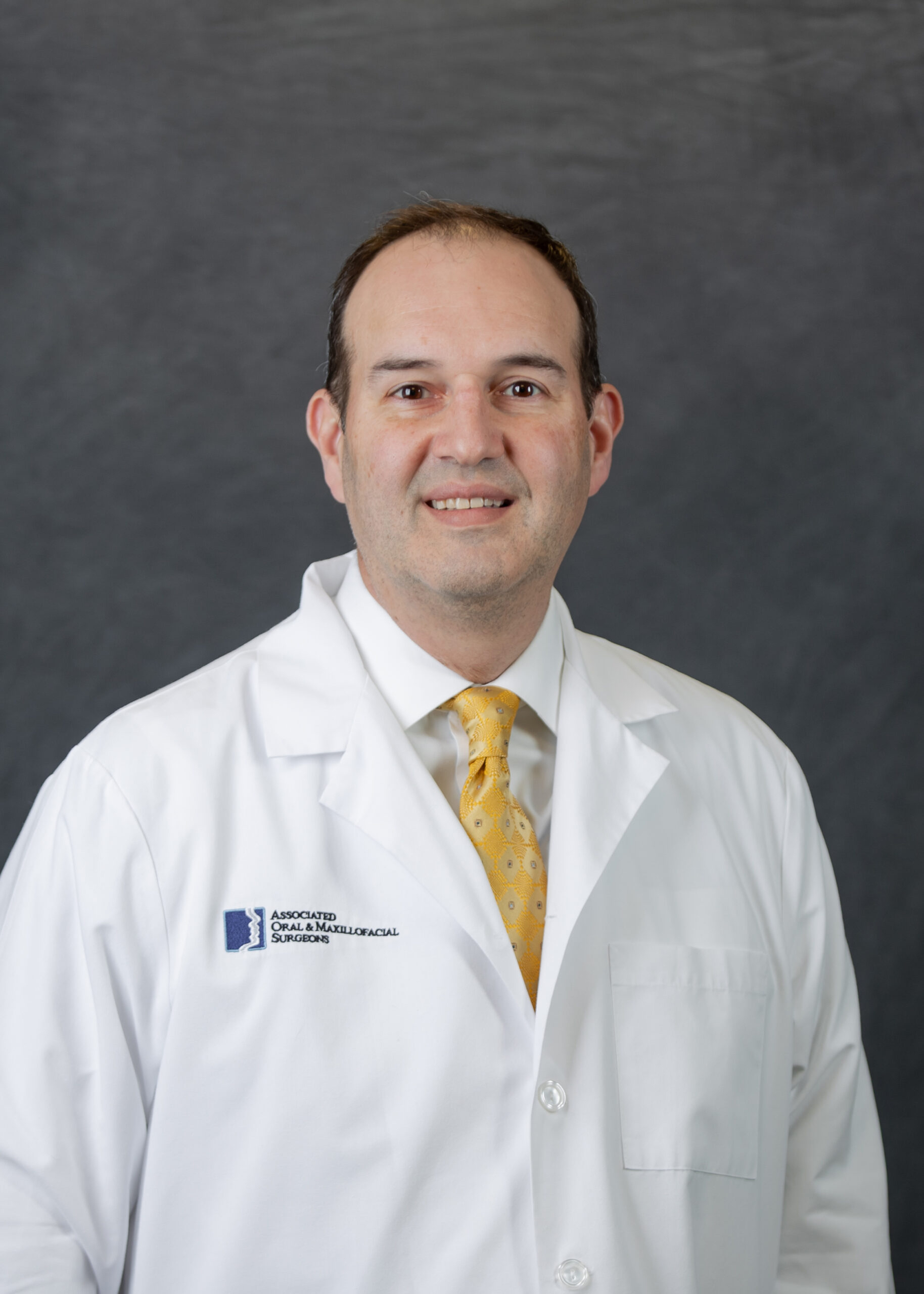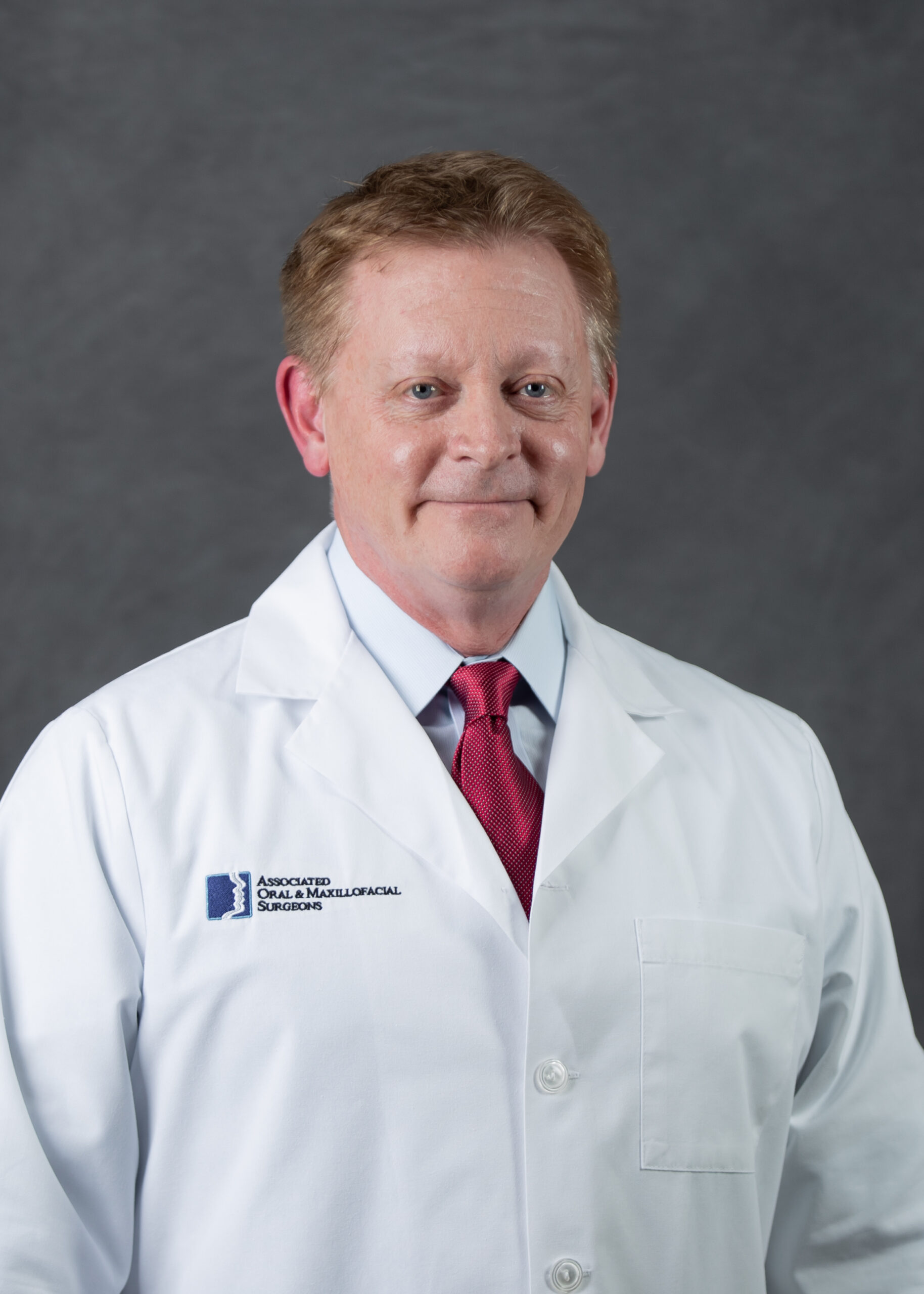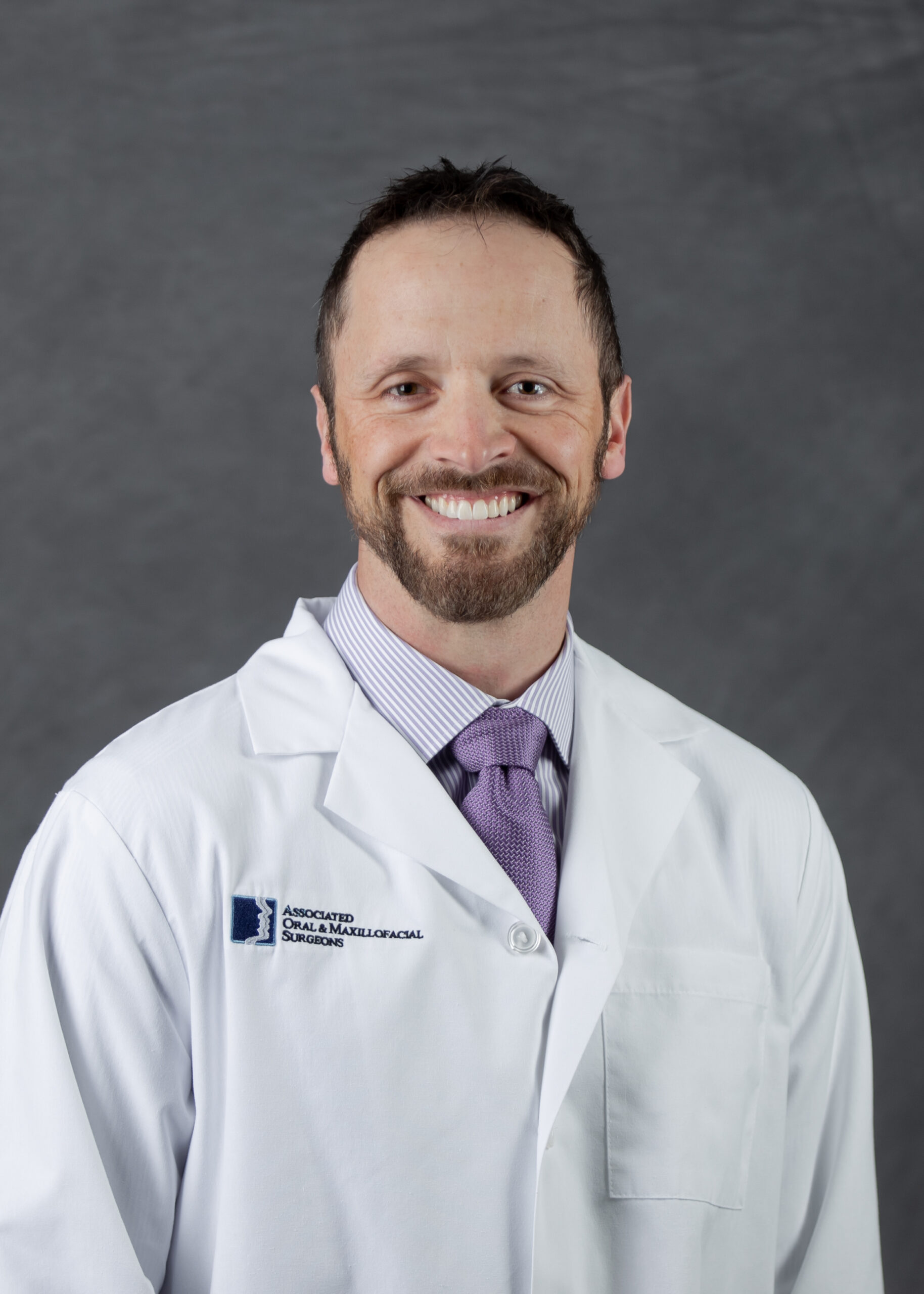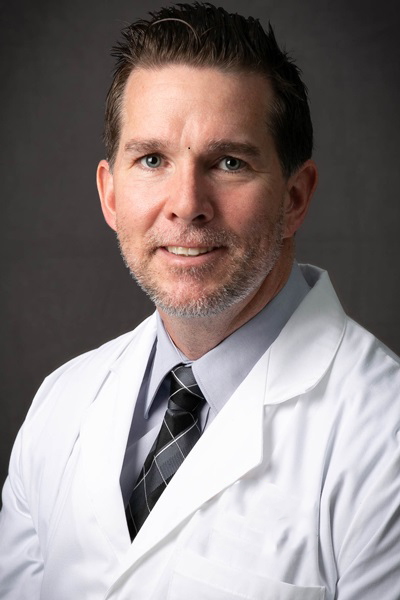Sleep Apnea Treatment
Obstructive sleep apnea (OSA) is a serious and even life-threatening condition. The risks of undiagnosed OSA include heart attack, stroke, irregular heartbeat, high blood pressure, heart disease, and decreased libido. In addition, OSA causes daytime drowsiness that can result in accidents, lost productivity, and relationship problems.
The National Sleep Foundation estimates that 18 million adults have obstructive sleep apnea, and it is likely that OSA also affects 2% to 3% of children. Yet, people with OSA may not be aware they have a problem. If someone close to you has spoken of your loud snoring and has noticed that you often wake up abruptly, gasping for air, you should consult your Oral and Maxillofacial Surgeon (OMS).
An estimated 18-20 million adults in the US suffer from OSA.
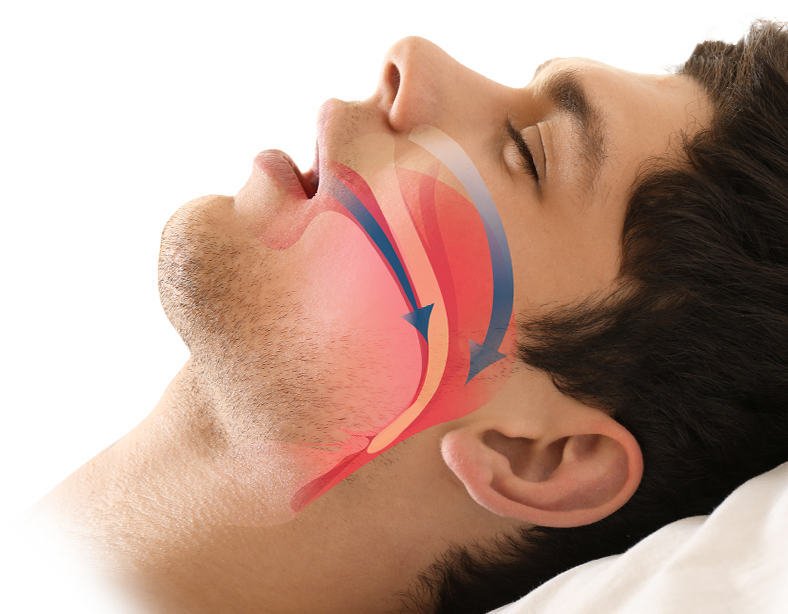
- Sleep Better
Sleep apnea is a condition which causes you to wake up periodically throughout the night, interfering with the quality of your sleep. Treating sleep apnea can mean better sleep for both you and your bed partner.
- Feel Better
A better night’s sleep can improve your mood, concentration, and overall sense of well-being.
- Stay Healthy
Treating sleep apnea can reduce your risk for apnea-related health conditions, including hypertension and heart disease.
What Is OSA?
During sleep, the upper airway can be obstructed by excess tissue, large tonsils, or a large tongue. Also contributing to the problem may be the airway muscles, which relax and collapse during sleep, nasal passages, and the position of the jaw. The cessation of breathing, or “apnea,” brought about by these factors initiates impulses from the brain to wake the person just enough to restart the breathing process. Sleep apnea is generally defined as the presence of more than 30 apneas during a seven-hour sleep. In severe cases, periods of not breathing may last for as long as 60 to 90 seconds and may recur up to 500 times a night.
Treatments
Depending on whether your OSA is mild, moderate, or severe, your OMS will select the recommended treatment for you. This can range from behavior modification to oral appliances to an air pressure device. Surgery may be a good alternative for some Peoria and Galesburg patients, but it’s important to keep in mind that no surgical procedure is universally successful. Every patient has a different shaped nose and throat, so before surgery is considered your OMS will measure the airway at several points and check for any abnormal flow of air from the nose to lungs.
- Oral Sleep Appliances
These mandibular advancement devices are a nonsurgical treatment option effective for Peoria and Galesburg patients with mild to moderate sleep apnea who do not like the CPAP machine. The appliance positions the lower jaw forward advancing the tongue and supporting the airway musculature and is generally well tolerated.
- Uvulopalatopharyngoplasty (UPPP)
This procedure shortens and stiffens the soft palate by partially removing the uvula and reducing the edge of the soft palate.
- Functional Rhinoplasty
This procedure surgically improves airflow through the nose by reinforcing the internal nasal valves and nostrils, straightening the septum, and reducing enlarged nasal turbinates.
- Genioglossus Advancement (GGA)
This procedure tightens the front tongue tendon, reducing the degree of tongue displacement into the throat. This operation is often performed in tandem with at least one other procedure such as UPPP or hyoid suspension.
- Maxillomandibular Advancement (MMA)
This procedure surgically moves the upper and lower jaws forward along with the soft tissues of the tongue and palate, opening the upper airway. For some patients, the MMA is the only technique that can create the necessary air passageway.
- Hypoglossal Nerve Stimulator
This outpatient procedure typically performed in a hospital or ambulatory surgical setting, allows for placement of an electrode and battery pack that facilitates stimulation of the hypoglossal nerve that helps the tongue maintain a more anterior position while patients are sleeping.
Continuous therapy is essential.
Sleep apnea is a chronic condition. While self-care techniques may resolve mild sleep apnea, you will likely need to continue therapy nightly to control your symptoms.
Use your oral appliance or CPAP machine every night and make it a priority to sleep at least six to eight hours every night. If you are not seeing results, speak to your doctor about changing tactics.
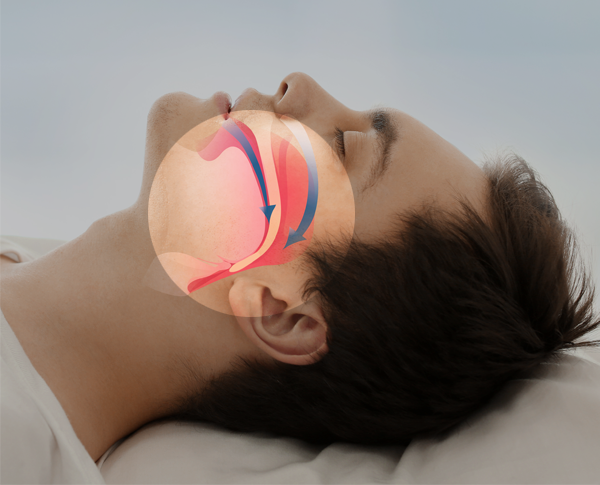
Without Treatment — The airway collapses during sleep, interfering with proper breathing.
How does treatment help me sleep?
Sleep apnea treatment ensures you are breathing properly while you sleep. If your sleep apnea treatment is effective, you should notice the results within a few nights.
After starting therapy, patients often experience:
- More energy during the day
- Reduced snoring
- Better control of diabetes and hypertension
- Reduced cardiovascular risk
- Improved concentration and mood
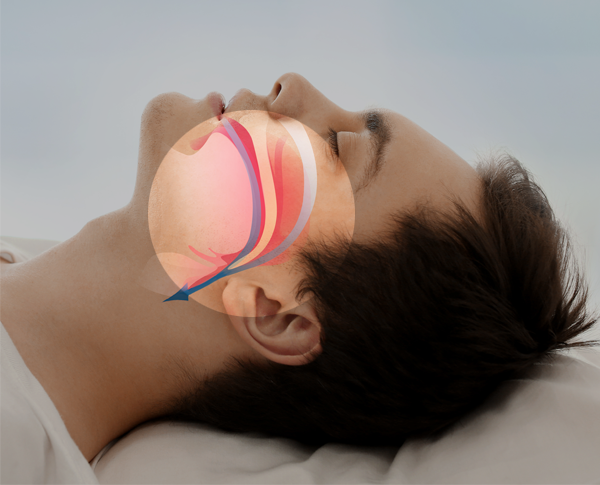
With Treatment — Sleep apnea treatment maintains an open airway for a better night’s sleep.
At Associated Oral & Maxillofacial Surgeons, we know how to help you. Our board-certified surgeons and expert staff can provide the care you need to relieve the discomfort you feel.
